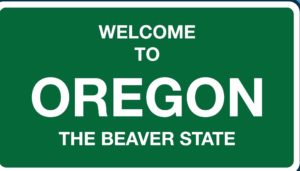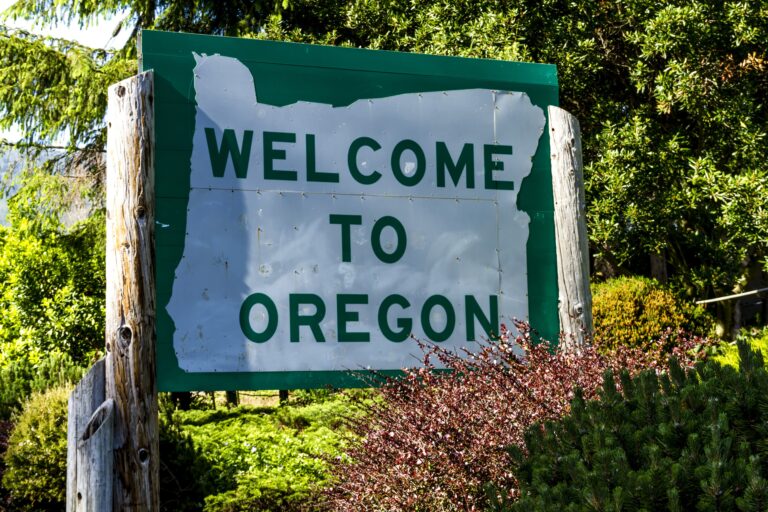SALEM, Ore. — The 2017 Oregon Legislature pumped $5.3 billion into the state’s highway system over the next decade — the largest transportation package in decades.
Today, 15 projects are under construction, funded by the legislation that created Keep Oregon Moving.
About 80 other projects are in different stages of planning, such as design work and obtaining rights of way, according to agency data examined by the Statesman Journal.
And even more projects will unfold as the funding legislation generates revenue in the years ahead.

By some measures, the Oregon Department of Transportation is doing well.
Roadwork and behind the scenes design have started on a handful of projects, including repaving I-5 from Salem to Woodburn. Other projects include upgrading or replacing bridges, fortifying highways against the threat of earthquakes and enhancing interchanges to reduce congestion.
And the agency is posting transparency metrics on a website so taxpayers can track the contracts in real time.
But advocates and agency officials alike warn it’s not nearly enough.
Oregon’s transportation system faces long-term challenges not included in the 2017 legislation.
More state bridges will need upgrades in the coming years. And rural roads continue to be a high-need area, especially for legislators representing districts outside Oregon’s urban areas.
The plan passed in 2017 had a fourfold aim: Preserving the existing system of roads and bridges; reducing congestion, particularly in the Portland-metro area; increasing transportation choices, such as mass transit and bicycle paths; and public accountability and transparency.
Here’s a look at what the plan has done so far, what’s ahead and what the state’s needs are.
Unmet bridge needs
Oregon’s infrastructure needs are highlighted on an industry report card released this month by the American Society of Civil Engineers.
Despite Oregon’s planned investment in infrastructure, the state still received an overall grade of C-, a mediocre outcome that reflects the state’s long-term and unfunded needs in critical areas like bridges, roads, levees and wastewater.
The needs are heightened by an awareness that Oregon faces a 20% chance of a massive 9.0 magnitude earthquake in the Cascadia Subduction Zone, which puts older bridges at risk.
To put it in context, nearly 20% of Oregon’s 8,161 bridges and culverts are at risk of becoming structurally deficient in the near future, the report found. Bridge maintenance needs are expected to grow and require nearly three times the funding from House Bill 2017.
State transportation officials say Oregon needs to stay vigilant about the state’s needs, despite the benefits from HB2017.
“It truly is a race that probably doesn’t have a finish line,” ODOT Director Matt Garrett said at recent press event with the American Society of Civil Engineers.
Accountability measures
Oregonians are already starting to pay for the transportation improvements. A 10-cent gasoline tax is unfolding in four stages. It started with a 4-cent increase in 2018.
Three more 2-cent increases are slated for 2020, 2022 and 2024, provided the state meets accountability measures set by the law. Those include reporting information transparently to the public about project details, costs and schedules.
That work has already started, even though work on most of the road projects hasn’t started yet. The state launched its transparency, accountability and performance website in January, which is required by the state law.
“The public, media and stakeholders now have access for the first time ever to condition data on bridges and pavement in every single city and county in the state as well as for the state highway system,” said Travis Brouwer, assistant director of the Oregon Department of Transportation.
While each piece runs on a slightly different schedule, in a way, it’s all part of a broader plan, state officials said.
“We have taken this very seriously and really treated it like a transportation highway project in terms of having a project plan and deliverables and due dates,” Brouwer said.
Student safety: Gervais staffer performs CPR to help save eighth-grade girl
Dollars can change
The public also can see if a project has come in below or above its budget.
That could easily become a factor with the planned Center Street bridge between west Salem and downtown, which may cost about $100 million for seismic upgrades instead of the $40 million lawmakers budgeted in 2017.
“If one project comes in under budget, we can ship that money to another project in the region,” Brouwer said.
At this point, there aren’t any major delays anticipated, state officials said.
That can change, if the state’s past performance is any indication. Data from state transportation projects in 2018 show about 80 percent of nearly 100 projects were completed on time.
The bridge construction could start in 2024 and other projects are spaced out even further into the future.
Interstate 5 paving
Elsewhere, there are visible signs of work.
Road crews began work this month on a 12.4-mile stretch of Interstate 5 between Woodburn and Salem.
The interstate has ruts in vehicle wheel paths that put motorists at a risk of hydroplaning in rainy weather, transportation officials say.
Paving began northbound from Brooks to Woodburn.
Nightly lane closures are expected between Sunday evenings and Friday mornings. One lane can be closed between 7 p.m. and 9 a.m. A second lane can be shut down between 9 p.m. and 5 a.m., giving motorists delays of up to 30 minutes.
During the lane closures, motorists can still travel north and south.
Work on the $17 million project is expected to last through October.
Upcoming Salem-area projects
Most of the work is on the horizon, including in the Salem area.
For example, design work starts this year for a project that will widen Interstate 5 between Keubler Boulevard in south Salem and the Delaney Road interchange to relieve congestion on the southbound side.
Construction work is due to start in 2021 on the $35.4 million project and includes replacing a bridge over the Commercial Street northbound off-ramp and reconstruction of the southbound Commercial Street on-ramp and thee southbound Delaney Road ramps to get on and off the interstate.
In 2020, construction will start on a nearly $9 million project that adds sidewalks and bicycle lanes on Oregon 214 in Silverton between Smith Street and Pioneer Drive.
Small-scale projects are in the pipeline too. Pedestrian safety improvements are planned at the intersection of Oregon 214 and Jefferson Street in Silverton.
The $750,000 project will have a pedestrian island, flashing beacon and lights. It’s expected to go out for a bid late this year, with construction in 2020.
Oregon’s transportation system faces long-term challenges not included in the 2017 legislation. More state bridges will need upgrades in the coming years. And rural roads continue to be a high-need area. (©2019 FOTOSEARCH)
The Associated Press is an independent global news organization dedicated to factual reporting. Founded in 1846, AP today remains the most trusted source of fast, accurate, unbiased news in all formats and the essential provider of the technology and services vital to the news business. The Trucker Media Group is subscriber of The Associated Press has been granted the license to use this content on TheTrucker.com and The Trucker newspaper in accordance with its Content License Agreement with The Associated Press.






